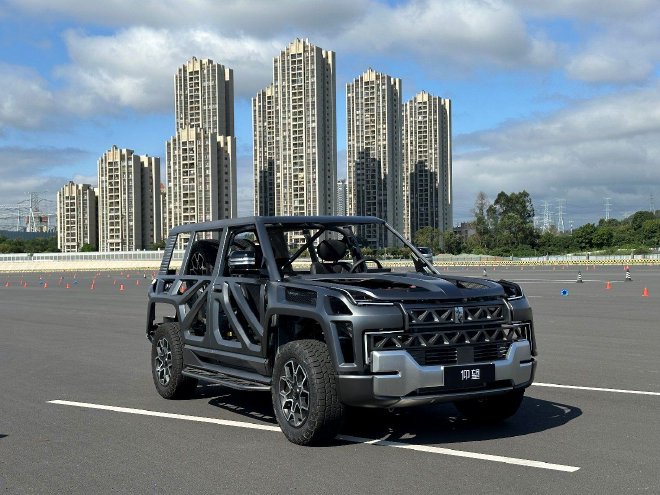Recently, a brand-new concept car was officially released. The new car is based on the design of steering column and brake caliper, aiming at achieving a higher level of safety redundancy. Let’s see what’s special about this car.

It can be seen that this concept car is based on looking up at U8. But what it actually wants to convey to us is a brand-new security technology. Compared with the traditional car, it has neither steering column nor brake caliper, but it can turn, turn around and brake.
So how does it achieve these functions?

As we all know, the steering angle of the steering wheel is controlled by the steering gear and the tie rod when the conventional vehicle is steering, so as to realize the steering of the vehicle. Looking up at this easy-to-square concept car, the required steering angle is calculated according to the driver’s steering intention, and different torques are applied to the left and right front wheels to deflect the steering tie rod and realize wheel steering. Through the fusion control of rear axle differential and front axle differential, the vehicle stability during steering is realized.

And at this stage, relying on the powerful motor, the average steering control error of this concept car is less than 3%, which is not much different from the traditional mechanical steering control experience. In addition, through the fusion control of rear axle differential and front axle differential, the vehicle stability during steering can be realized. Therefore, in some emergency steering situations, the stability close to the traditional steering can be achieved.
The principle is actually very simple, but in the whole steering process, it is necessary to control the four-quadrant torque of the steering wheel more finely, so as to realize the accurate control of vehicle drive, steering wheel angle and vehicle yaw angle, and the technical difficulty is actually very high. And in order to enable users to continue the operation logic of conventional vehicles when using differential steering technology, it is also necessary to optimize the steering operation experience of the whole vehicle for many times.

The traditional braking method is to push the friction plate to clamp the brake disc through the hydraulic cylinder to generate friction torque and realize braking. Looking up at the concept car, the braking is realized by controlling four driving motors to generate electromagnetic resistance torque by reverse dragging.

Easy Sifang has four high-power motors with peak power of 220-240kW, which is the basis for its calipers-free braking. Relying on these four powerful and independent motors, the maximum braking deceleration of 1.0g can be achieved, and the maximum friction force between each tire and the ground can be accurately calculated, the braking torque of four wheels can be distributed in real time, and the optimal slip rate of tires can be accurately controlled to keep the vehicle with the best braking performance. In addition, the response speed of this innovative braking system only needs 20 milliseconds, far exceeding the industry level of hydraulic braking of 200 milliseconds.
Some people may ask, what is the significance of braking and steering without relying on mechanical structure for a car? First of all, this technology can play a great role in the small probability emergency when the braking system or steering system of the vehicle fails to work, helping the driver to realize the deceleration braking and turning of the vehicle and avoid accidents. Don’t underestimate these small probability events, which may cause extremely serious consequences.
Looking up, I think that since I want to build a high-end, I need these security redundancies. In any case, we should praise the behavior of broadening the safety boundary of the whole vehicle and pushing the safety of the vehicle to a new height. The appearance of this concept car not only gives the automobile industry a new idea in safety, but also creates a new direction of integrated control of chassis and power technology, which provides more possibilities for automobile development.